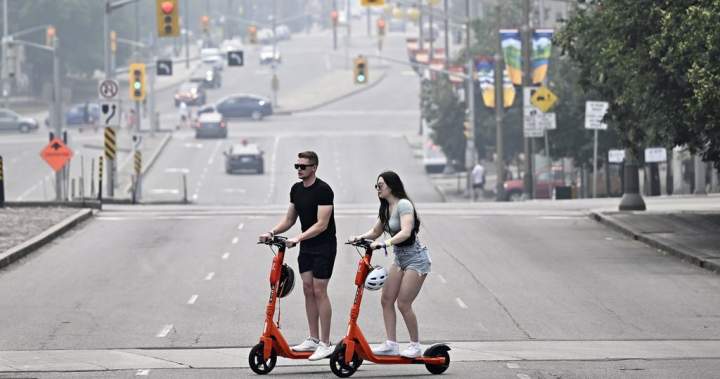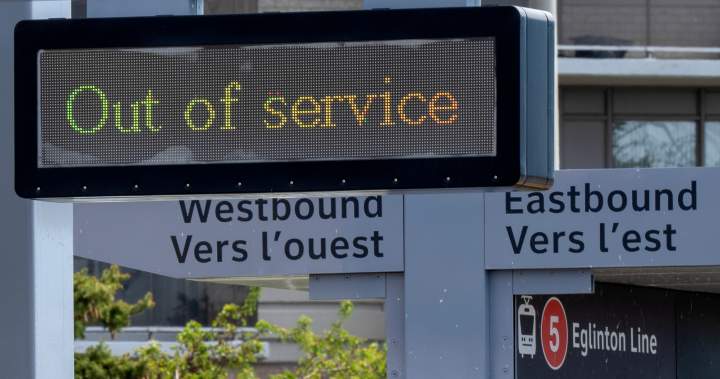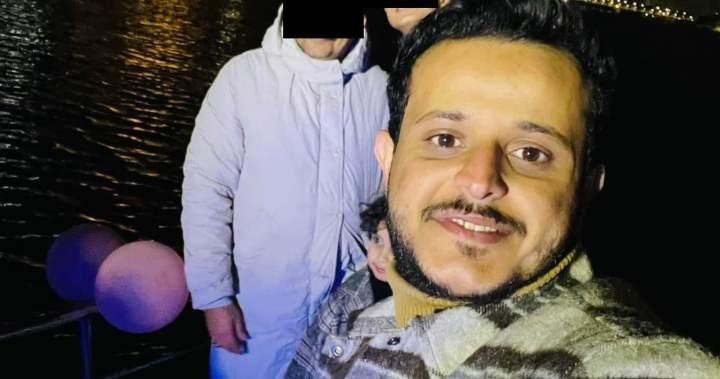Excerpts from Carrie Sakamoto’s 2024 sworn affidavit, which was filed in an Alberta class action lawsuit. She harshly criticized Ottawa’s Vaccine Injury Support Program.
1


Carrie Sakamoto left her family’s beloved dogs outside in the freezing cold. She started fires in her kitchen, and she fell down the stairs of her Alberta home — several times.
These incidents all occurred since 2021, when Sakamoto was injured and rushed to hospital after a rare adverse reaction from a COVID-19 vaccine.
Sakamoto was hospitalized for 17 days. For a time, she could not walk, talk, chew or focus.
The federal government announced a program in 2020 to help people like Sakamoto, pledging timely and fair support to the unfortunate like her who were seriously hurt after immunizations.
The program was supposed to spare the injured and fragile the cost and stress associated with litigation.
In Sakamoto’s case, the program, called the Vaccine Injury Support Program, or VISP, did neither.
Instead of providing Sakamoto, of Lethbridge, Alta., with timely and fair financial support, she says that VISP and the outside consultants who were selected to administer it for the federal government — Oxaro Inc. — have only exacerbated her physical and psychological suffering.
“Extremely frustrating. Dehumanizing. Incredibly dismissive. Even abusive,” is how Sakamoto describes her experiences and dealings with Canada’s VISP.
Sakamoto made those comments in a sworn statement she filed in a class action lawsuit launched in the Alberta Court of King’s Bench in 2024. She is a lead plaintiff against the federal and provincial governments in this Alberta court case.
Both Oxaro and the Public Health Agency of Canada, which hired Oxaro to run VISP in 2021, declined to comment on Sakamoto’s case, allegations or criticisms of the federal program.
In response to a 15-page list of questions from Global News about its VISP administration, Oxaro Inc. sent a series of written statements.
“The VISP is a new and demand-based program with an unknown and fluctuating number of applications and appeals submitted by claimants,” the company said.
“The program processes, procedures and staffing were adapted to face the challenges linked to receiving substantially more applications than originally planned,” Oxaro added. “Oxaro and PHAC have been collaborating closely to evaluate how the program can remain agile to handle the workload on hand while respecting budget constraints.”
“We aim at providing a process that ensures that all cases are treated fairly and with the same care, respect, and due diligence,” the company added.
Read Oxaro’s statement here.
In an interview with Global News, Sakamoto said she does not think Oxaro should have been hired to administer VISP.
“I don’t think they realized how many injured people were going to apply. And I think they’re overwhelmed,” she added.
Lawyers representing Sakamoto and a group of plaintiffs alleged that the two governments provided the public with false, misleading and/or incomplete information about the safety and efficacy of COVID-19 vaccines, preventing the public from making an informed decision regarding vaccination.
The case and allegations against VISP highlight the depth of despair and frustration thousands of Canadians feel after being promised they would be taken care of if their immunizations triggered rare adverse reactions and they were injured.
Injured applicants like Sakamoto say they also face a revolving door of unreachable VISP case managers and arbitrary and unfair decisions.
The Alberta class action case remains before the courts. A hearing to determine if the class will be certified has been scheduled for mid-2026.
Both the federal and provincial governments have tried unsuccessfully to have the case dismissed. The Attorney General of Canada called the lawsuit “frivolous, irrelevant, and improper.”
A Global News investigation into VISP published earlier this month revealed that Oxaro Inc. has received $50.6 million in taxpayer money, including $33.7 million spent on administrative costs, while injured Canadians received only $16.9 million.
(Payouts to the injured have since increased to $18.1 million in the latest reporting period, ending June 1, 2025. But Health Canada was unable to say yesterday how much more money Oxaro was paid above the $50.6 million tallied during the last reporting period.)
Global also found that PHAC and Oxaro underestimated the number of injury claims VISP would get, initially predicting 40 per year and then up to 400 valid claims annually. More than 3,317 applications have now been filed to June 1 — of those, 1,738 people are still waiting for their claim to be decided.
The government launched VISP as “a no-fault system” in 2021, which was supposed to compensate injured and fragile Canadians without them having to pursue costly, stressful and time-consuming litigation against vaccine manufacturers and public health officials.
However, a Global News investigation has found that five Canadians have now launched lawsuits against governments and manufacturers for injuries they allege are the results of the vaccinations, amid allegations that VISP has failed to support them.
They include Sakamoto and several of the injured and ill people featured in Part 1 of this investigation, including Ross Wightman of British Columbia and Ontario residents Kayla Pollock and Dan Hartman, whose 17-year-old son died suddenly in his room in the middle of the night after his vaccination. Read more about their stories here.
Victoria lawyer Umar Sheikh represents several vaccine-injured people and others across Canada who claim they were injured by COVID-19 vaccines.
Sheikh argues that pushing people to file lawsuits for damages is contrary to the rationale of VISP, which intended to keep sick and vulnerable people out of courtrooms.
“These cases will cost between $20,000 and $40,000 in fees and costs. You’re dealing with clients who are injured, who have no money, and they’re not working,” added Sheikh, who represents Pollock.
Carrie Sakamoto shares Pollock’s plight. Once a healthy and vibrant mother, she, her husband, and their three boys lived on a dreamy seed farm in the foothills near Lethbridge, Alta.
Now, she says her life is one in which the physical, psychological and emotional toll has been immense.
Everything in Sakamoto’s life and family situation changed after her second COVID-19 shot during the pandemic.
Within a few hours of her vaccination on June 18, 2021, Sakamoto developed flu-like symptoms that worsened daily. Her health rapidly deteriorated. Her husband was sick, too.
While her husband, Shawn, got better, Sakamoto never recovered and ended up in hospital. She suffered from Bell’s palsy, with severe head pain that still requires medication.
A Health Canada adverse reaction injury database shows Sakamoto is not alone: 216 people like her reportedly suffered Bell’s palsy-like facial paralysis after vaccinations in the pandemic.
As a result of Sakamoto’s injuries, VISP decided she was entitled to a $62,500 injury indemnity.
Though Sakamoto’s hearing loss was acknowledged as a vaccine injury, VISP has denied her $2,000 claim for a new hearing aid. It also denied her $1,300 bill for psychological counselling to help her deal with how her appearance has been disfigured by the palsy. VISP also nixed claims for prescription pain medicines and glasses.
Today, Sakamoto continues to suffer from other health problems she links to her vaccine injury.
“I also have trouble sleeping and suffer from anxiety and depression. The lack of support has been profoundly demoralizing,” Sakamoto’s affidavit states.
Sakamoto says she had to pay out of pocket for physiotherapy and other expenses during her recovery. Eventually, because her family’s debt was too high, she says, she stopped physiotherapy.
She says her family also had to sell their farm to pay for her ongoing medical and financial needs, and because she was no longer able to live independently there due to her memory issues.
The family racked up so much debt that her husband, at 53, made a career change, according to Sakamoto.
“So, he went back to school and learned how to drive a semi truck, and now he’s on the road driving semi,” she told Global News. “The job he has right now, he is able to be home at night, and that’s really important because I make bad decisions when I’m home alone.”
Perhaps the most painful challenge involves the family’s finances.
Sakamoto used to manage them. Not anymore.
“I had to go and take myself off all of our accounts except for one, because I kept spending money out of the wrong accounts. I can’t keep numbers straight,” Sakamoto said.
Sakamoto had intended to return to full-time work later in her life, as many mothers do when their children become older and more independent.
Yet Sakamoto says VISP made no allowance for her loss of future earnings, although its policies permit this.
VISP inquired about her employment leading up to her injury to determine her eligibility for income replacement, she said. But she says case managers did not take into account her part-time work in 2017 and 2018 at a Home Hardware when calculating her eligibility. She says she received none.
Sakamoto says she submitted all required documents to get her additional claims approved and requested a reassessment of her case in 2023, but her file did not appear to advance until Global News asked VISP about it in mid-June.
VISP then denied her bid to reassess her injuries on July 8. In its response, VISP suggested that unidentified physicians decided that all her ailments following her vaccination were unrelated to her COVID-19 vaccine.
Sakamoto now has until early September to appeal.
During her ordeal, the Albertan said she has dealt with nine different VISP case managers.
“For no reason. All of a sudden, they’re gone,” she said. “It’s incredibly frustrating. They lose documents. They don’t know what you’re doing, what things are required. They repeat things. It’s like you’re starting over again every time you get a new person.”

The Canadian Institute for Health Information says e-scooter injuries are on the rise across the country.
It released data Thursday saying that hospitalizations involving e-scooters for kids between five and 17 years old increased by 61 per cent from 2022-23 to 2023-24.
The agency said hospitalizations for men between 18 and 64 went up by 22 per cent in that time period and went up by 60 per cent for women.
The data shows the majority of e-scooter hospitalizations happened in Ontario, Quebec, Alberta and British Columbia.
Dr. Daniel Rosenfield, a pediatric emergency physician at SickKids Hospital in Toronto, said the number of kids and teens arriving in the emergency department with e-scooter injuries has been increasing over the last five years and some have been “catastrophic,” including one 13-year-old boy’s death in 2023.
“We see anything from minor scrapes and cuts and little lacerations that need a couple of stitches to … traumatic brain injury, internal bleeding in the chest and abdomen, open fractures that need to go to the operating room to be fixed,” he said.
Some children between four and six years old have been hurt while riding with their parents on an e-scooter, Rosenfield said, but injuries among teens riding on their own is more common.
Among cases where the information is available, 80 per cent of the riders who end up in the ER aren’t wearing helmets, he said.

Get the day’s top news, political, economic, and current affairs headlines, delivered to your inbox once a day.
Rosenfield said he thinks the rise in injuries correlates to an increase in the popularity and affordability of e-scooters in recent years — together with a lack of understanding about how dangerous they can be.
“These scooters, much like everything electrified these days, have come down in price and have increased in power,” he said.
“Their acceleration and torque is tremendous. And most parents, when they’re buying these things for their kids, are completely unaware of that.”
Pamela Fuselli, president and CEO of Parachute Canada — a charity focused on injury prevention — said the laws around e-scooters vary between provinces and even municipalities.
In Ontario, riders must be at least 16 years old. But in Toronto, e-scooters are not allowed on public roads or paths. And just east of the city in Oshawa, they’re permitted under a pilot program.
But people are clearly using them even where they’re not allowed, Fuselli said.
“Even while a city may have a bylaw about this, they can regulate what’s operated in public spaces, but then that has to be enforced. They can’t really regulate what’s sold,” she said.
Fuselli said kids under 16 should not be riding e-scooters — and parents shouldn’t be buying them for children younger than that.
“They look like toys, but they really are motor vehicles,” she said.
This report by The Canadian Press was first published July 17, 2025.
Canadian Press health coverage receives support through a partnership with the Canadian Medical Association. CP is solely responsible for this content.
© 2025 The Canadian Press

The outgoing head of Toronto’s transit agency is casting doubt over the tentative September opening date for the years-delayed Eglinton Crosstown LRT.
At a Toronto Transit Commission meeting Thursday, outgoing CEO Greg Percy said it would be “a reach” to open the new transit line by September.
“We’re looking still at this fall to get something happening,” he said in response to questions from Coun. Josh Matlow.
“I think September’s a reach but this fall is plausible and certainly by year-end. There’s lots and lots of stuff going on that we need to fix to open safely.”
A spokesperson for the Ministry of Transportation said September remained the target for the project.

Get the day’s top news, political, economic, and current affairs headlines, delivered to your inbox once a day.
“As our CEO Michael Lindsay has said, we are making major progress on the Eglinton Crosstown LRT. All civil infrastructure for the project is now complete, operator driver training is now complete and in June we formally transferred operations of the line to the TTC’s command centre at Hillcrest,” Metrolinx said in a statement.
“We are currently relentlessly stress testing the system to ensure it is safe and reliable on the day it opens.”
The Eglinton Crosstown LRT has been without an opening date for years as it has encountered construction issues, software problems and legal battles involving the consortium building it.
Phil Verster, the former CEO of provincial transit agency Metrolinx, previously said the public would be given a three-month heads-up that the line was due to open.
“It’s an enormous stretch to have it open by September,” Toronto Coun. Dianne Saxe said on Thursday. “There are several testing phases that are meant to take place…. I haven’t seen any sign they’re within 90 days of being able to open and we haven’t got the notice they promised.”
It’s unclear if that is still Metrolinx’s plan. It has not been mentioned in recent statements. To meet September, it would need to have been made in June.
“As we have said, we are targeting September for substantial completion,” the agency said in its statement.
As recently as early June, Ontario Premier Doug Ford said he believed the project was on track to open in September.
Roughly one month ago, the TTC took control of trains on the line as final tests stepped up towards opening day.
© 2025 Global News, a division of Corus Entertainment Inc.

Federal prosecutors have withdrawn terrorism allegations against a Yemeni man arrested in the Toronto area three months ago.
The case against Husam Taha Ali Al-Sewaiee was dropped at a court appearance on Thursday, his lawyer said in a statement.
The move came after the RCMP received new information that satisfied initial fears about the 33-year-old.
He still faces a threatening charge.

Get the day’s top news, political, economic, and current affairs headlines, delivered to your inbox once a day.
Al-Sewaiee was initially arrested in Mississauga, Ont., on April 15 for uttering threats. Four days later, he was arrested again.
This time, the RCMP’s Integrated National Security Enforcement Team alleged he had attempted to leave Canada to join a terrorist organization.
He was not charged with terrorism. Instead, prosecutors asked the court for a terrorism peace bond that would restrict his movements in the name of public safety.
“Mr. Al-Sewaiee has always maintained this peace bond application was baseless and the allegations against him were entirely without merit,” his lawyer Rebecca Amoah said.
“Mr. Al-Sewaiee has been wrongly prosecuted, arrested, and detained. He has spent almost two months in custody, without being charged with any related criminal offence, pending the determination of a baseless peace bond application that the Crown has now withdrawn.”
Stewart.Bell@globalnews.ca
© 2025 Global News, a division of Corus Entertainment Inc.


These ’90s fashion trends are making a comeback in 2017


According to Dior Couture, this taboo fashion accessory is back


The old and New Edition cast comes together to perform


Uber and Lyft are finally available in all of New York State


The final 6 ‘Game of Thrones’ episodes might feel like a full season


New Season 8 Walking Dead trailer flashes forward in time


Meet Superman’s grandfather in new trailer for Krypton


6 Stunning new co-working spaces around the globe






